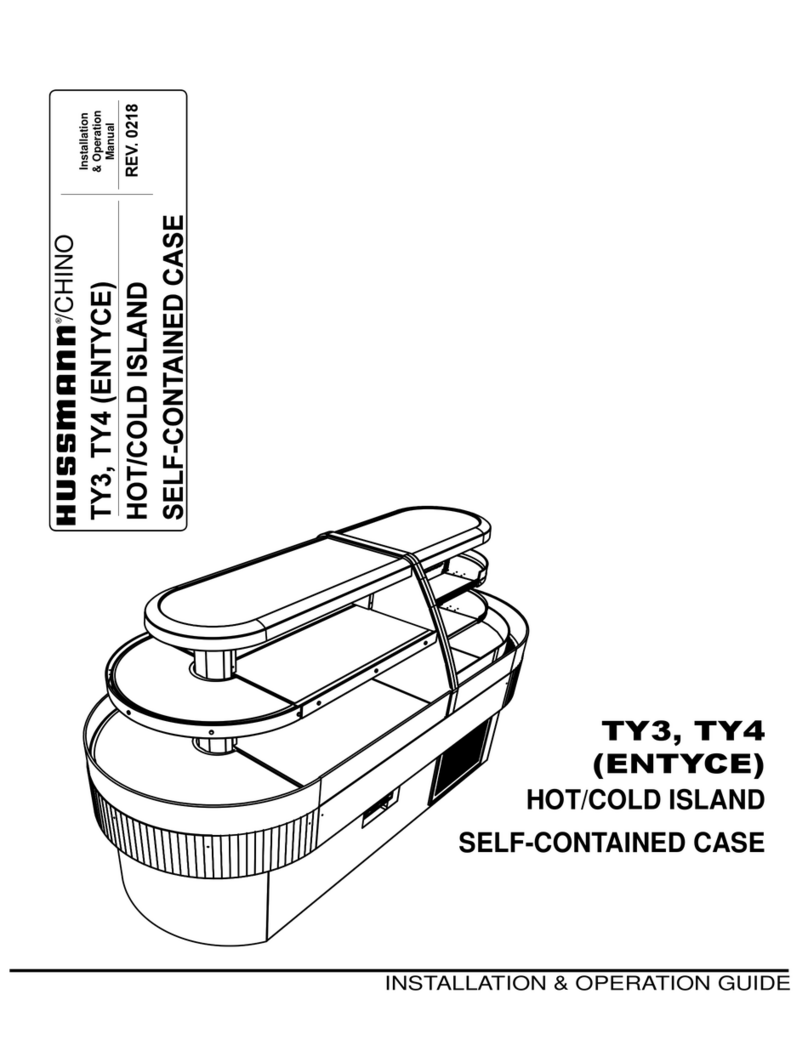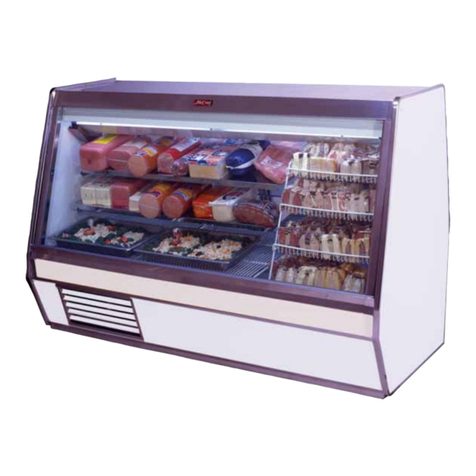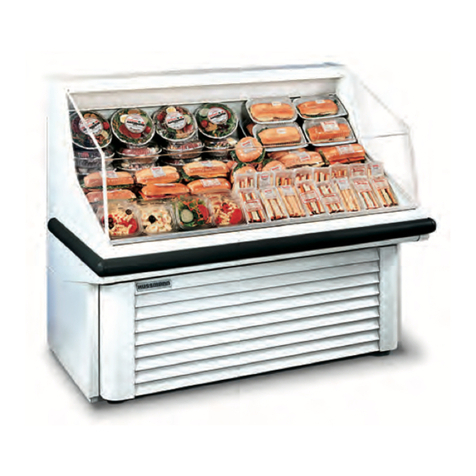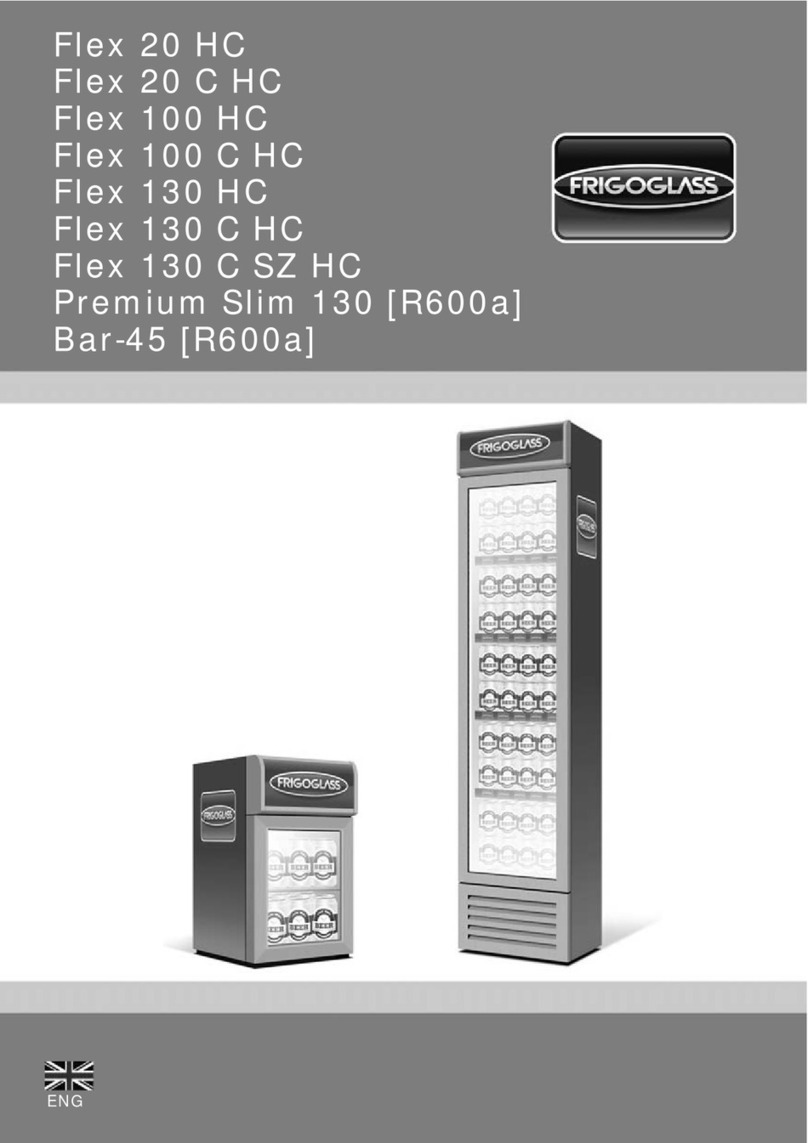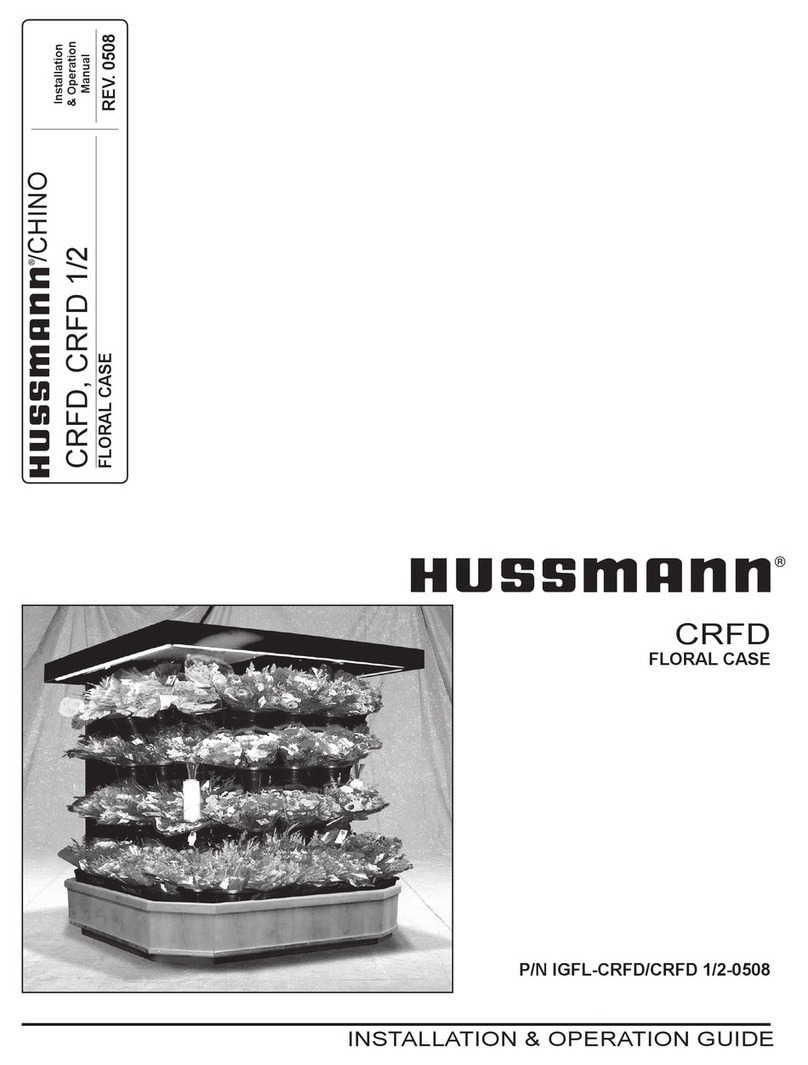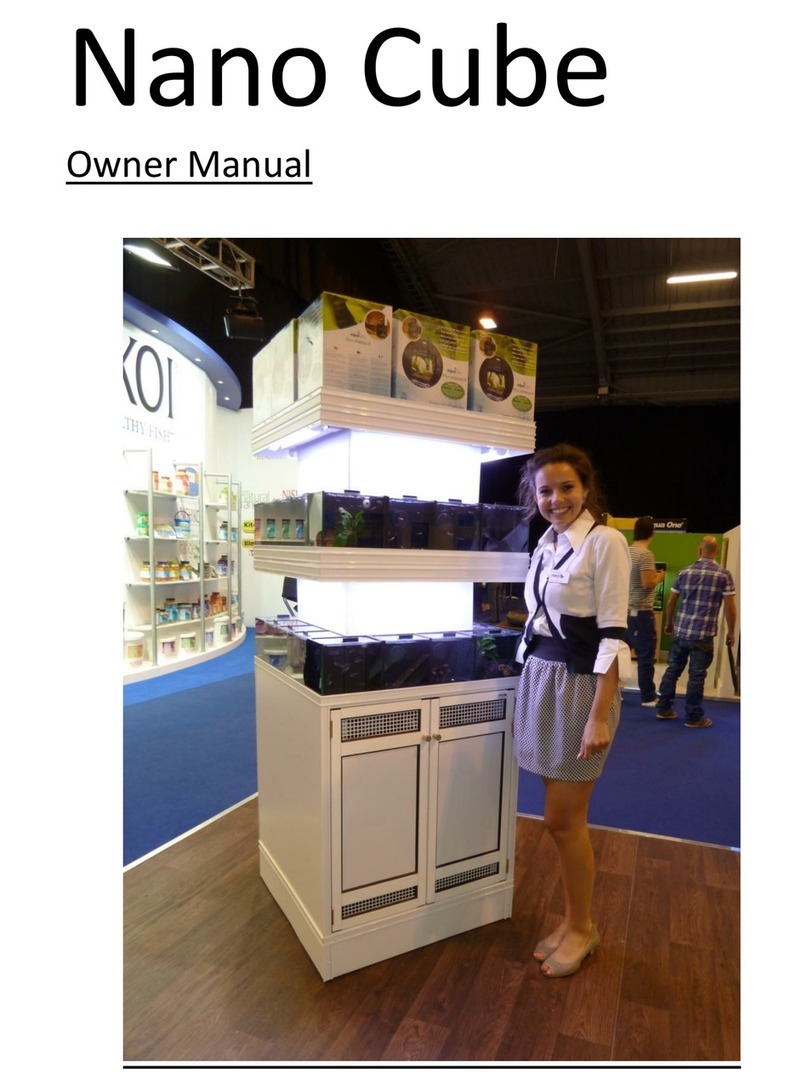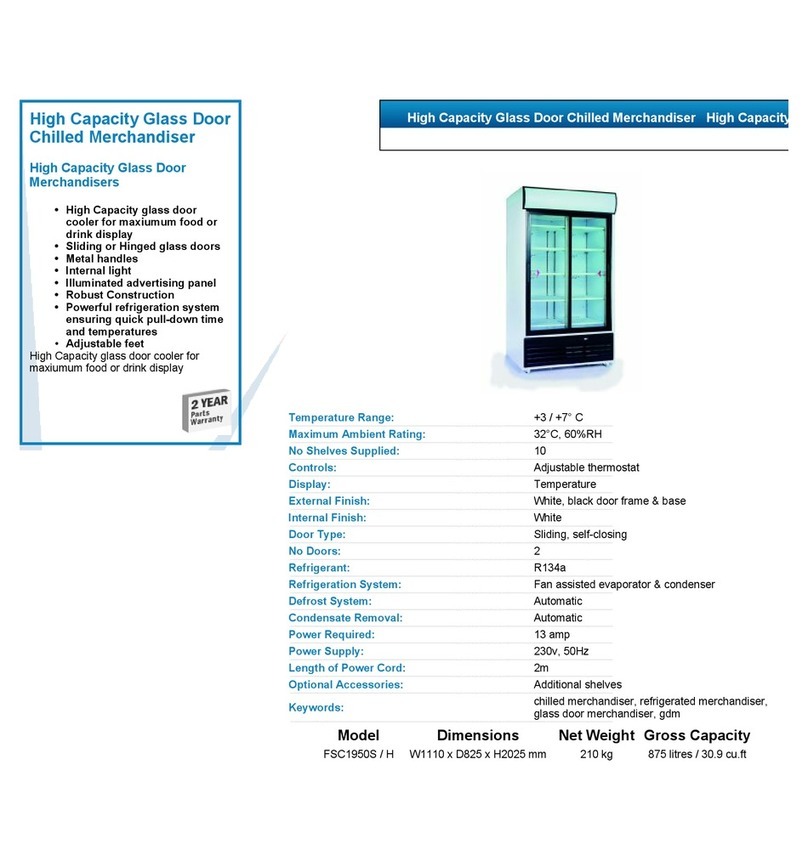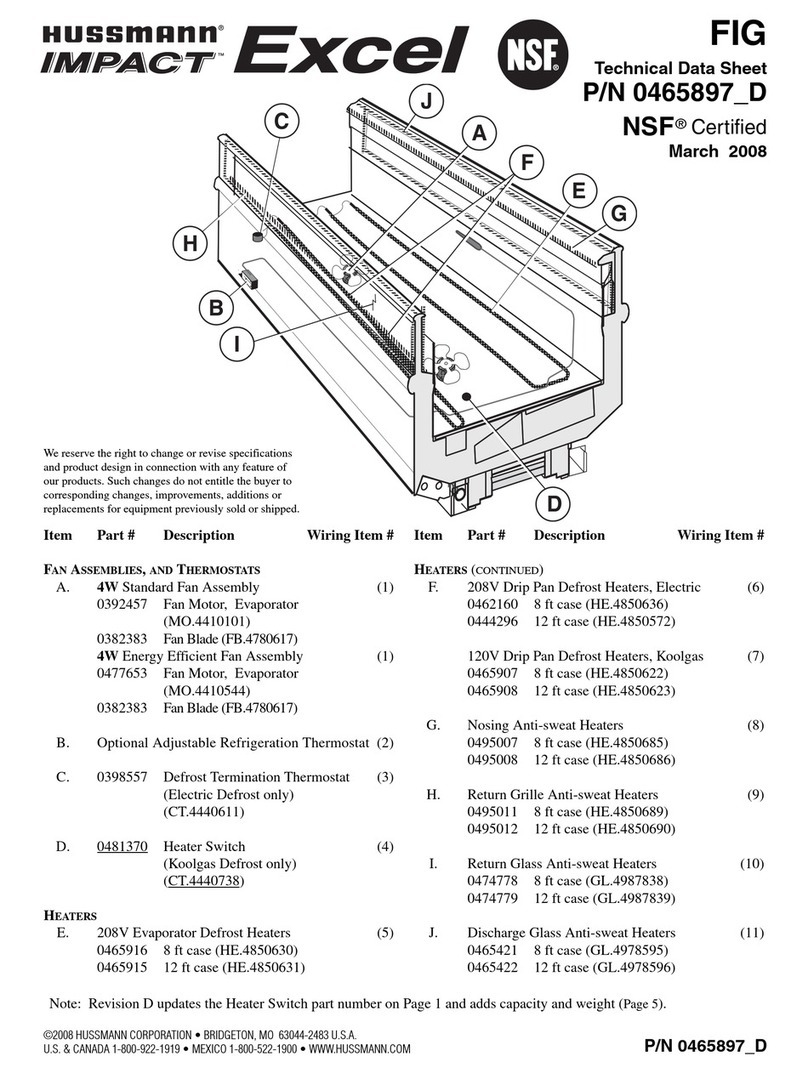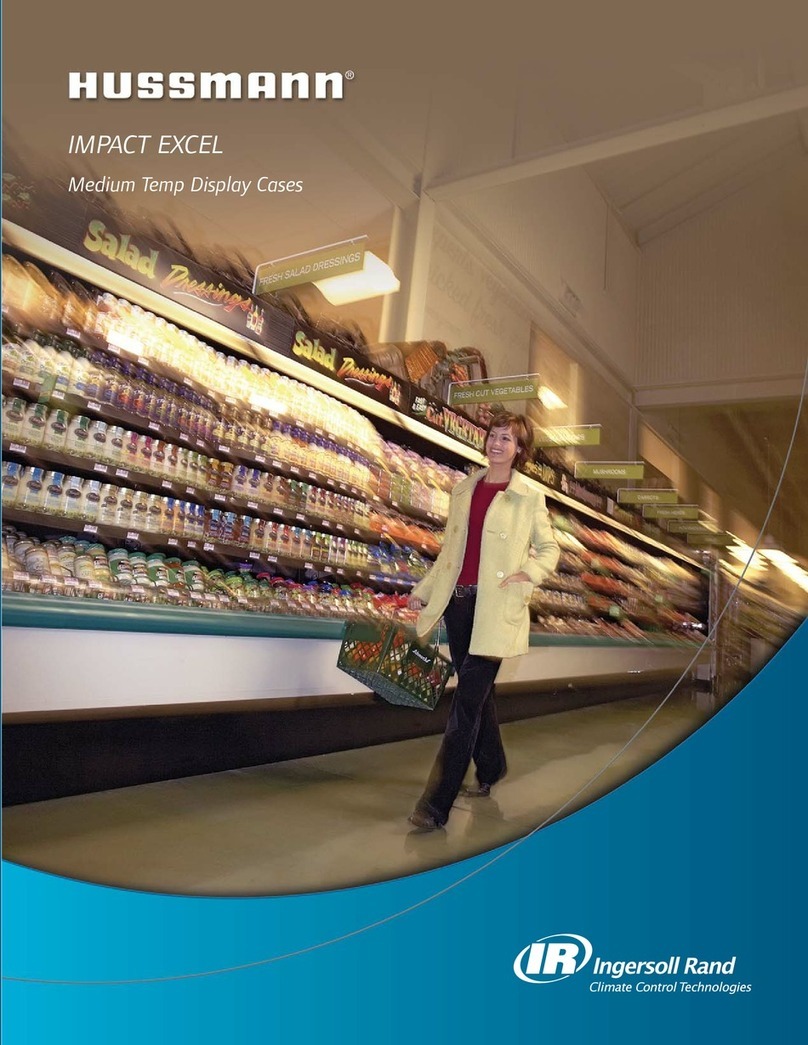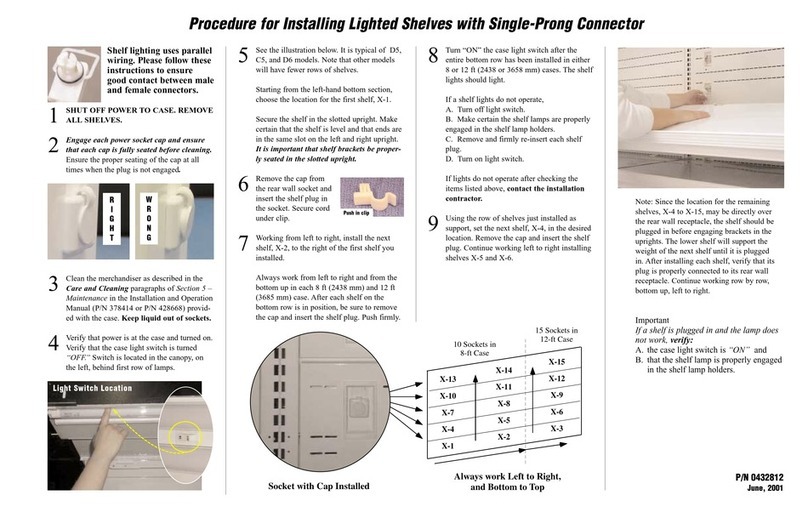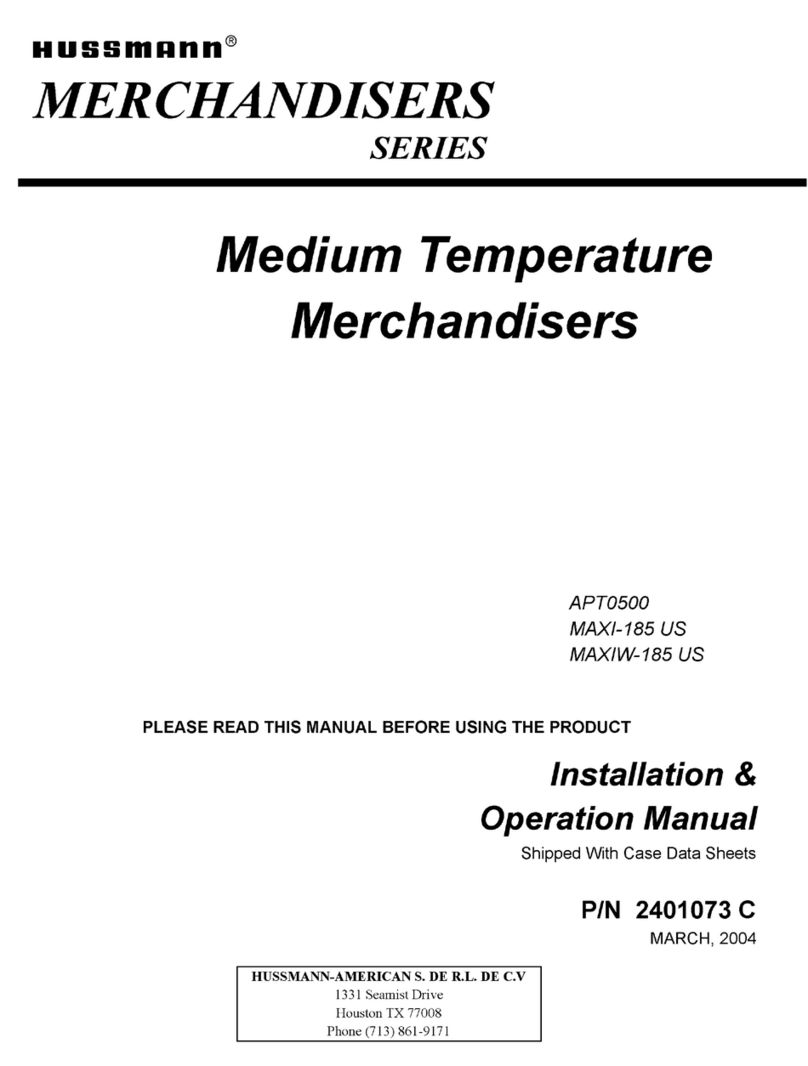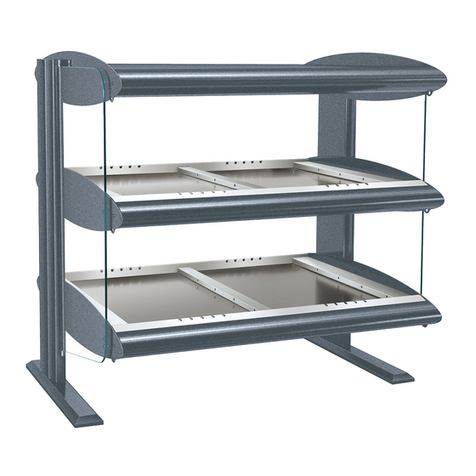9
The electronic defrost circuit is equipped with a
defrost termination safety switch and is attached
to one of the evaporator coil tubes (located inside
the Unit Cooler Assembly). This switch senses
temperature and will cut power to the defrost heat
element should the temperature at the surface of
the switch reach 100° F. This switch only
terminates power to the heat element and will not
end the timed / temperature defrost cycle. Once
the merchandiser has returned to run mode, the
termination safety switch will re-set when the
temperature at its’ surface reaches 70° F.
Warning! The defrost termination safety switch
functions as a possible fire protection device. Do
not remove or by-pass the switch from the defrost
circuit.
Note: If an electronic control AD unit loses power
and the temperature at “P2” is less than 60°F, it
will automatically enter a defrost cycle after a
two-minute delay.
Glass Door Models and Maintenance:
The glass door is designed for use on indoor units
or in a controlled environment. It is constructed
with a non-heated, triple-pane glass-pack, with
both inner and outer panes being tempered. To
avoid possible condensation on the outer surface
of the door, case temperature in the merchandiser
should be maintained near its’ designed set-point
of 16°F +/- 4° and ambient dew-points around the
cabinet location should be kept below 60°F. Any
household glass cleaner can be used to clean the
surface of the door. The glass door’s gasket is a
rubber bellows-style magnetic gasket. The
replacement gasket has an insert dart that installs
into a retaining slot in the door frame. The gasket
can be started in-place with light hand pressure,
followed with mild impact pressure applied with a
dead-blow hammer to ensure that the legs of the
dart penetrate fully into the slot. During
replacement, set the gasket at the 4-corners of the
door first to reduce stretching. If the door gasket
appears to be in good condition but is failing to
seal to the surface of the cabinet, both the spring-
load tension and adjustment of the hinges should
be checked.
Solid Door Models and Maintenance:
Cabinets designed for outdoor use will have a
metal clad door that has been insulated with the
same urethane foam insulation as the cabinet.
The exterior metal is stucco embossed to hide
minor impacts and is coated with a fluorocarbon
paint system. This paint system was designed to
withstand years of outdoor exposure. For routine
cleaning of the door’s exterior surface, a mild
detergent diluted in warm water should be
adequate.
Hinge Spring Tension:
A simple test of the spring-load tension is to open
the door just enough to insert two fingers between
the surface of the cabinet and the handle side of
the door. When the fingers are withdrawn, there
should be enough tension set on the hinge spring-
loads to slowly move the door to a closed
position. If the door does not move from this two-
finger location, it’s likely that either the spring-
load requires re-tensioning or lubrication. If the
door moves part way from the two-finger location
but stops short of the cabinet, the compression of
the gasket along the hinge side of the door should
be checked. If there is too much compression, the
door will bind when closed and should have its
hinge-mount location checked and possibly
adjusted. Removing the hinge covers will expose
the spring-loads for tension adjustment or
removal. Removal of the spring-load will expose
the hinge-adjustment plate and mounting screws
should hinge adjustment be required. See Figure
2for instruction regarding spring-load installation
and adjustment.
Decaling Recommendations Solid Door:
a) Use a decal with a 2-mil cast vinyl
substrate. Cast vinyl contains less
memory than a calendared vinyl or a
polyester substrate and will conform to the
embossed surface with the least amount of
stress on the decal’s adhesive.
b) The decal’s adhesive should have a
minimum peel-strength rating of 80 oz.
/inch.

